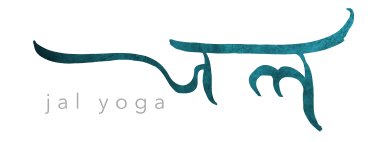Bandha is a practice in yoga known as “lock, hold, or bind” in Sanskrit. It is a form of “energetic lock” where practitioners block the flow of blood or ‘prana’ (life force) in certain parts of the body to improve the flow of energies and for optimal health.
Yogis contract their bodies in the practice. There are a total of three Bandhas with the fourth one which ties all of them together.

The first one starts with our root chakra call “Mula Bandha” or anal lock. The “root lock” as it is also known, is done by contracting our perineum muscles inwards, then holding them up throughout the entire yoga practice. Performing Mula bandha promotes energy flow to the rectum, stimulating the pelvic muscles and urogenital organs. This lock allows our energy to flow upwards throughout, allowing you to feel light as you practice the asanas.
The second energy lock is “Uddiyana Bandha”. “Uddiyana” in Sanskrit means to fly up. It means the moving up of energies from your abdominal organs to your diaphragm. This practice requires you to separate your feet about a meter apart while standing. Inhale through your nose and reach your arms up alongside your ears. Exhale out of your mouth and fold forward placing your hands just above your knees. Without inhaling close your lips, straighten your elbows, and feel your abdominal wall and organs push up and back towards your back. It should feel somewhat like a suctioning back and up of everything on the inside with your abdominal muscles pulled towards the back of your spine. Maintain this for as long as you can. To come out of this start inhaling through your nose and standing up straight, raising your arms up to the side of your ears, then exhaling through your nose again as you move your arms down.
Locking the abdominal section helps you with inverted poses and allows you to twist more deeply providing a soft massage for the deeper internal muscles of the lower back. It is also a remedy for constipation to indigestion. It balances the adrenal system and relieves stress.
As we move upwards, the third energy lock is “Jalandhara Bandha”. It is a throat lock controlling the flow of energy in the nerves and blood vessels of the neck. To perform this lock, one has to do it with specific breathing exercises, unlike the first two bandhas. Jalandhara Bandha is a powerful practice compressing the sinuses on the main arteries of the neck, thus helping to regulate circulatory and respiratory systems. The contraction placed on the throat helps to balance thyroid and metabolism.
To practise the throat lock, the yogi comes to a sitting position with the back relaxed but straight. In a cross-legged position or in the Vajrayana, place your palms on your knees. Slowly inhale through your nose and bring your chin towards your neck and lift your sternum lightly. Press your hands down on your knees and straighten your arms. Pull your chin back and retain the position for as long as possible. To exit this bandha, lift your chin and inhale to fill the remaining capacity of your lungs before exhaling.
The last is known as “Maha Bandha”. This Bandha requires the practitioner to lock all the three mentioned bandhas above. Sit in a comfortable cross-legged position, and without inhaling engage Mula Bandha, then find Uddiyana Bandha. Inhale a tiny bit and lift your chest, and from there engage Jalandhara Bandha. Retain, pressing your palms down, as long as possible. When you have had enough, lift your head, inhale fully, and release all the bandhas. The maha bandha activates and regulates the entire endocrine system in our bodies.
The locking of energies helps stop blood flow and help increase the flow of fresh blood when the bandha is released, flushing away old dead cells. The practice helps us renew our organs keeping them rejuvenated and also improves circulation.
However, there are different levels to practising bandhas and it may not be safe to practice on your own without the right knowledge! For those who want to dive in deeper and learn more about Bandha, join us at our Gokul Yoga Bandhas 101 Workshop with Pearl Bhasin at Jal Yoga!




